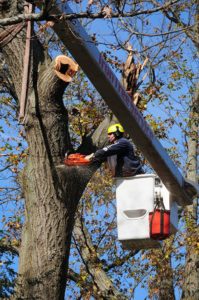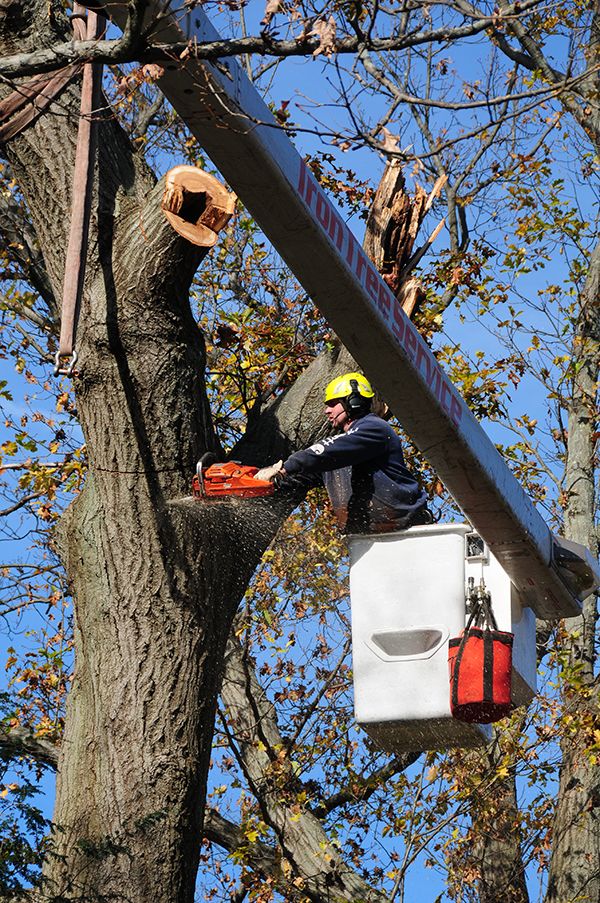
Decay
Decay is characterized as any section of a tree that has rotted, or decomposed. In some tree species, decay occurs over a long period of time, whereas in others it occurs more rapidly. As it advances, it destabilizes the tree, reducing its structural integrity, and impeding its ability to grow. Decay is an internal process, but it does have a few external indicators. It can appear on the exterior of tree in the form of open cracks, cavities, holes, or bulges in the wood. It can also appear on the tree in the form of fungal growths, which tend to resemble large mushrooms.
Cracks
A crack is a separation in a tree’s wood, generally caused by the improper closure of a wound. Cracks can also appear in a tree as the result of a weak branch union, or due to the use of the flat-cut pruning method. There are several different types of cracks, all of which can be potentially hazardous. Vertical cracks appear along the length of the tree, gradually separating over time. Horizontal cracks appear more suddenly, developing across the wood grain just before a tree fails.
Cankers
A canker is an area of the tree where the bark, or cambium has died. Large cankers, and groups of cankers that exist in close proximity to one another, can cause fractures to develop in the tree as it continues to develop each year. Because no new growth can form around the cankered area, it can hinder the tree’s growth, eventually causing it to collapse under its own weight.
Root Problems
The root system is one of the most important parts of the tree. It performs a number of vital tasks, serving as the tree’s anchor, and assuring that it remains well nourished at all times. If a tree’s root system is severely compromised, the tree’s branches will likely begin to exhibit symptoms of decline, eventually dying back altogether. If too much of the root system has been damaged, the tree’s crown will begin to decline as well, potentially resulting in the death of the tree. Another sign of severe root damage is when a tree begins to lean heavily to one side. This can signify that the root system has become unstable, and that the tree could potentially topple over.
Weak Branch Unions
Trees can sometimes suffer from naturally formed imperfections in their branches. These are called weak branch unions. There are two types of weak branch unions: a branch union with included bark, and an epicormic branch. The first type occurs when a branch and stem grow so closely together that the bark forms between them, developing inside of the tree. This is referred to as included bark. As the bark continues to grow inside of the tree, it weakens the branch, increasing the probability of it failing. The second type of union occurs when epicormic branches form on a tree. Epicormic branches are branches that form to replace those that were previously pruned, or injured. They establish a shallow connection to the tree, growing quickly, and often developing to a point where they can no longer support their own weight. When this occurs, the branch is likely to fail due to its weak union with the tree.
Poor Tree Architecture
When a tree experiences a shift in its growth pattern, or it incurs any type of damage, it can have a profound impact on the architecture of the tree. This can cause the tree to start leaning excessively to one side. The farther the tree leans, the more likely it is to fail under its own weight.
Dead Trees or Branches
Any part of a tree that is dead is considered structurally unsound, and should be removed as soon as possible. When placed under any sort of duress, a dead tree or branch always has the potential to fall.


